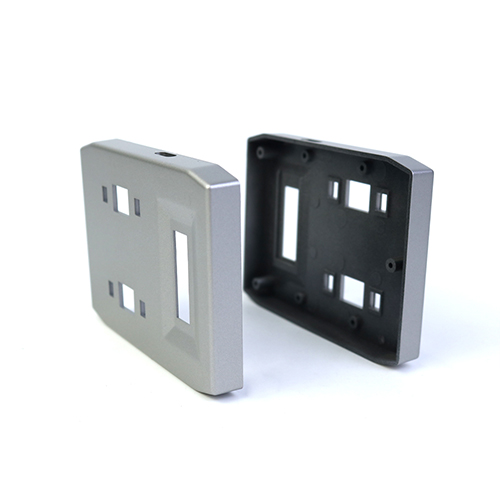In the heart of China’s manufacturing revolution, CNC machine tool turning and milling composite technology has emerged as a driving force behind the country’s push toward advanced manufacturing. As the demand for high-precision, multi-functional machinery grows globally, China is positioning itself as a leader in the development and application of this game-changing technology. From streamlining production processes to enabling complex part manufacturing, CNC composite machining is reshaping assembly lines and propelling China’s industrial landscape into the future.
The Evolution of CNC Turning and Milling Composite Technology
The integration of turning and milling in a single machine—commonly known as composite machining—has revolutionized traditional manufacturing methods. Unlike standalone turning or milling machines, CNC composite machines combine the capabilities of both, enabling manufacturers to perform multiple operations in a single setup. This eliminates the need for transferring parts between machines, reducing production time, improving accuracy, and minimizing human error.
China’s journey in the development of CNC turning and milling composite machines mirrors the country’s broader industrial rise. Initially reliant on imported technologies, Chinese manufacturers have made significant strides in recent years, evolving from followers to innovators in the field. This transformation has been driven by a combination of government support, private sector investment, and an ever-growing pool of skilled engineers and technicians.
Key Milestones in China’s CNC Machine Tool Development
1.1980s–1990s: The Foundation Phase
During this period, China relied heavily on imported CNC machine tools to meet its industrial needs. Local manufacturers began studying and replicating foreign designs, laying the groundwork for domestic production. Though these early machines lacked the sophistication of their international counterparts, they marked the beginning of China’s CNC journey.
2.2000s: The Acceleration Phase
With China’s entry into the World Trade Organization (WTO) and the rapid expansion of its manufacturing sector, demand for advanced machine tools surged. Chinese companies started collaborating with international players, adopting new technologies, and investing in R&D. The first domestically produced CNC turning and milling composite machines emerged during this time, signaling the industry’s move toward self-reliance.
3.2010s: The Innovation Phase
As the global market shifted toward high-precision manufacturing, Chinese companies stepped up their efforts to innovate. Advances in control systems, tool design, and multi-axis capabilities allowed Chinese CNC machines to compete with global leaders. Manufacturers like Shenyang Machine Tool Group and Dalian Machine Tool Corporation began exporting their products, establishing China as a credible player in the international market.
4.2020s: The Smart Manufacturing Phase
Today, China is at the forefront of integrating Industry 4.0 principles into CNC composite machining. The incorporation of artificial intelligence (AI), Internet of Things (IoT) connectivity, and real-time data analytics has transformed CNC machines into intelligent systems capable of self-optimization and predictive maintenance. This shift has further solidified China’s position as a leader in the global manufacturing ecosystem.
Advantages of CNC Turning and Milling Composite Technology
Efficiency Gains: By combining turning and milling in a single machine, manufacturers can drastically reduce setup and production times. This is particularly advantageous for industries like aerospace, automotive, and medical devices, where precision and efficiency are paramount.
Enhanced Precision: Eliminating the need to transfer workpieces between machines reduces the risk of alignment errors, ensuring higher accuracy and consistency in finished parts.
Cost Savings: Composite machining reduces labor costs, minimizes material waste, and lowers maintenance expenses by consolidating multiple operations into one machine.
Complexity in Design: The multi-axis capabilities of composite machines allow for the production of intricate parts with complex geometries, meeting the demands of modern engineering and design.
The Impact on Assembly Lines and Global Manufacturing
The rise of CNC turning and milling composite machines in China is reshaping assembly lines across industries. By enabling faster, more accurate, and more flexible production processes, these machines are helping manufacturers meet the demands of a global market that values precision and customization.
Moreover, China’s leadership in this space has a ripple effect on global manufacturing. As Chinese CNC machines become more competitive in terms of quality and price, they offer an attractive alternative to traditional suppliers, driving innovation and reducing costs for manufacturers worldwide.
The Future: From Precision to Intelligence
The future of CNC turning and milling composite technology in China lies in the integration of smart manufacturing principles. AI-powered control systems, IoT-enabled monitoring, and digital twin technology are set to make CNC machines even more efficient and adaptable. Additionally, advancements in materials science, such as the development of new cutting tools and lubricants, will further enhance machine performance.
Chinese manufacturers are also exploring hybrid manufacturing solutions that combine composite machining with additive manufacturing (3D printing). This approach could unlock new possibilities for producing complex parts with both subtractive and additive processes, further revolutionizing assembly lines.
Conclusion: Leading the Next Wave of Innovation
China’s development path in CNC turning and milling composite technology exemplifies its broader industrial transformation—from imitator to innovator. By continuously investing in technology, talent, and infrastructure, the country has established itself as a global leader in advanced manufacturing.
As the world embraces smart factories and digitalization, China’s CNC industry is well-positioned to lead the next wave of innovation. With its commitment to precision, efficiency, and innovation, CNC turning and milling composite technology is not only revolutionizing assembly lines but also shaping the future of global manufacturing.
Post time: Jan-02-2025





